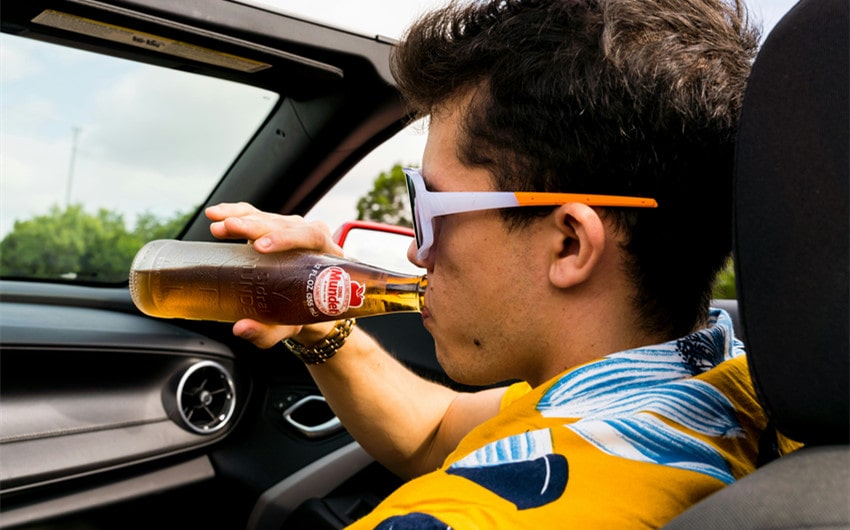How Long After Drinking Can I Drive Without Risks?
We’ve all been there—enjoying a drink with friends and wondering if it’s safe to drive home afterward. It’s important to know how alcohol affects your body and when it’s okay to get behind the wheel. You might be asking yourself, how long after drinking can I drive? This question depends on various factors, from how much alcohol you’ve consumed to your body’s ability to process it.
In this article, we’ll break down the key considerations to help you make an informed, safe decision before you drive.
How Alcohol Affects Your Body
When you drink alcohol, it is absorbed into your bloodstream through the stomach and small intestine, affecting your body almost immediately. Once in the bloodstream, alcohol begins to impair brain functions, slowing down your reaction time, dulling your judgment, and reducing coordination.
Even small amounts of alcohol can affect your ability to make decisions and respond to unexpected situations on the road. The more you drink, the greater the impairment, which is why even “just one drink” can impact your ability to drive safely.
Your liver is responsible for processing alcohol, but it can only metabolize a small amount—roughly one standard drink per hour. This means that as you continue to drink, the alcohol in your bloodstream accumulates, raising your Blood Alcohol Concentration (BAC). Your BAC level is a direct indicator of how impaired you are.
The higher the BAC, the more your cognitive and motor skills are affected, making it dangerous to drive. It’s crucial to understand that even if you feel “okay,” your BAC might still be above the legal limit, which can put you at risk on the road.

Factors That Affect How Long You Should Wait Before Driving
Several factors influence how long alcohol stays in your system and when it’s safe to drive. Here’s a breakdown of the key variables that determine how long after drinking you should wait before getting behind the wheel.
Body Weight and Size
Your body weight and size play a significant role in how quickly your body absorbs and metabolizes alcohol. Generally, people with larger body mass tend to process alcohol more efficiently than those with smaller body sizes. This is because alcohol becomes more diluted in a larger body, meaning a bigger person may have a lower Blood Alcohol Concentration (BAC) after consuming the same amount of alcohol as someone smaller.
However, it’s important to remember that even if you’re larger, alcohol still impairs your ability to drive, and time is the only way to sober up.
Amount and Type of Alcohol Consumed
The number of drinks you’ve had and the type of alcohol you consume directly affect how long you should wait before driving. Different alcoholic beverages contain varying amounts of alcohol by volume (ABV). For instance, spirits such as whiskey or vodka have a much higher alcohol content than beer or wine.
A standard drink is generally considered to be one beer, one glass of wine, or one shot of liquor, each containing roughly the same amount of alcohol. However, consuming multiple drinks or stronger cocktails increases your BAC more quickly, meaning you’ll need to wait longer before driving safely.
Metabolism and General Health
Metabolism refers to how quickly your body processes alcohol, and this varies from person to person. Some people have a naturally faster metabolism, allowing them to process alcohol more efficiently. However, factors like age, overall health, and even genetics can affect your metabolic rate. People with liver conditions, for example, will process alcohol much slower, increasing the amount of time they need to wait before their BAC drops to a safe level.
Additionally, as people age, their ability to metabolize alcohol slows down, which means older individuals may need to wait longer after drinking before they can drive.
Food Intake
Drinking on an empty stomach can cause alcohol to enter your bloodstream faster, resulting in a quicker and higher spike in your BAC. When you eat food before or while drinking, the food slows down the absorption of alcohol, giving your body more time to metabolize it gradually.
This is why drinking on a full stomach might make you feel less affected by alcohol in the short term, but it doesn’t change how long your body ultimately needs to process the alcohol before it’s safe to drive. Food simply delays the absorption, but once the alcohol enters your bloodstream, it still needs to be metabolized at the same rate.
Tolerance Levels
Your tolerance to alcohol—how accustomed your body is to drinking—can affect how you feel after consuming alcohol, but it doesn’t change how long your body takes to metabolize it. Regular drinkers may feel less impaired or “more sober” than someone who rarely drinks, even if their BAC is the same. This can be dangerous because feeling fine doesn’t mean your BAC is within legal or safe limits for driving.
Tolerance only affects how your body reacts to alcohol, not the rate at which your liver processes it, so you’ll still need to wait the appropriate amount of time before driving, regardless of how high your tolerance is.
General Guidelines for How Long to Wait After Drinking
When it comes to deciding how long after drinking you should wait before driving, the general rule is that your body metabolizes alcohol at a rate of about 0.015% Blood Alcohol Concentration (BAC) per hour. This means that if your BAC is at 0.08%—the legal limit in many countries, including most of the US—it will take approximately five to six hours for your BAC to return to zero.
However, this timeline varies depending on how much alcohol you consumed, your body’s ability to metabolize it, and other factors like food intake and body size.
How Long Does It Take to Process One Drink?
For most people, it takes about one hour for the liver to process one standard drink, which contains approximately 0.6 ounces of pure alcohol. A standard drink is typically:
- One 12-ounce beer (around 5% alcohol)
- One 5-ounce glass of wine (around 12% alcohol)
- One 1.5-ounce shot of distilled spirits (around 40% alcohol)
So, if you’ve had just one drink, you’ll need to wait at least an hour before your BAC is likely to drop enough to be safe to drive. However, waiting one hour doesn’t guarantee that you’re under the legal limit, especially if you’re on the smaller side or have a slower metabolism. It’s always better to err on the side of caution and give yourself extra time.
Multiple Drinks Extend the Wait Time
If you consume more than one drink, the time you need to wait increases significantly. For example:
- Two drinks: Wait at least two hours.
- Three drinks: Wait at least three hours, and so on.
It’s important to remember that alcohol can accumulate in your bloodstream faster than your body can process it. If you drink several drinks in a short amount of time, your BAC could rise quickly, and it could take much longer for your body to return to a safe level. Drinking water, eating food, or even taking a break between drinks can help slow the absorption of alcohol, but they don’t speed up how quickly your liver metabolizes it.
BAC and Time: Example Scenarios
To give you a better sense of how long to wait, here are some example scenarios based on average alcohol metabolism:
- One standard drink (0.02% BAC): Wait at least 1-2 hours.
- Two standard drinks (0.04% BAC): Wait at least 2-3 hours.
- Three standard drinks (0.06% BAC): Wait at least 3-4 hours.
- Four standard drinks (0.08% BAC): Wait at least 5-6 hours (this is the legal limit in many places, and you should never drive at this BAC).
If you’ve had more than four drinks, it may take a full night’s rest (7-8 hours) before your BAC is low enough to drive safely. Always keep in mind that alcohol affects everyone differently, and individual factors like your metabolism, body weight, and overall health can alter these timelines.
Why You Should Wait Longer Than You Think
Even if you feel sober after a few drinks, your BAC might still be high enough to impair your driving. In fact, studies show that your coordination, reaction time, and decision-making abilities can still be impaired with a BAC as low as 0.02%. Therefore, it’s recommended that you wait longer than the minimum time suggested by BAC reduction charts or calculators. If you’re unsure whether it’s safe to drive, it’s always better to wait longer or find another way to get home.
Lastly, keep in mind that driving with any amount of alcohol in your system increases your risk of accidents and legal consequences, even if you’re technically under the legal limit. The safest option is always to give yourself plenty of time to sober up or avoid driving altogether if you’ve been drinking.
Legal BAC Limits and Safe Driving Thresholds
The Blood Alcohol Concentration (BAC) is the measure used to determine how much alcohol is in a person’s bloodstream. Legal BAC limits are set to ensure that drivers on the road are not impaired by alcohol, as even small amounts of alcohol can significantly affect a person’s ability to drive safely. Understanding the legal BAC limits and how alcohol affects your ability to drive is crucial for staying safe and avoiding legal trouble.
Legal BAC Limits Around the World
The legal BAC limit varies from country to country, but in many places—including most of the United States, the United Kingdom, and Canada—the standard legal limit for drivers over the age of 21 is 0.08%. This means that if your BAC is 0.08% or higher, you are legally considered too impaired to drive and can face serious penalties if caught behind the wheel.
Here are some common BAC limits based on different regions:
- United States: 0.08% BAC for drivers over 21. However, some states have even stricter laws for repeat offenders or commercial drivers, reducing the limit to 0.04%.
- United Kingdom: The limit is 0.08% in England and Wales, but Scotland has a stricter limit of 0.05%.
- Australia: The BAC limit is generally 0.05% for most drivers, though there are lower limits for professional drivers (0.02%) and zero tolerance for learners and provisional license holders.
- Canada: The limit is 0.08%, but some provinces have “administrative penalties” for drivers with BAC levels between 0.05% and 0.08%.
- Europe: Many countries, including France, Germany, and Italy, have a limit of 0.05%, while countries like Sweden and Norway have stricter limits, as low as 0.02%.
It’s important to note that these limits often vary depending on your license type and age. For example, commercial drivers and those under the legal drinking age may face stricter BAC limits, sometimes as low as 0.02% or even zero tolerance.
Why Even a Low BAC Can Be Dangerous
While the legal limit in many places is 0.08%, studies show that impairment can start at much lower BAC levels. Even with a BAC as low as 0.02%, a driver can experience decreased ability to track moving objects and perform multiple tasks at once. At a BAC of 0.05%, your coordination, judgment, and reaction time can already be significantly impaired.
Here’s how different BAC levels can affect your driving abilities:
- 0.02% BAC: You may feel relaxed, but your ability to track moving objects and respond to sudden changes is slightly impaired.
- 0.05% BAC: Your reaction time, coordination, and ability to steer are reduced, making it harder to make quick decisions. This is why many countries set their legal limit at 0.05%.
- 0.08% BAC: At this level, your concentration, short-term memory, and ability to process information are significantly impaired. You are much more likely to lose control of your vehicle or make dangerous decisions on the road.
- 0.10% BAC and above: Severe impairment in motor control, speech, and judgment. Driving at this level is extremely dangerous and could result in a serious accident.
Penalties for Driving Over the Legal Limit
If you’re caught driving with a BAC over the legal limit, the penalties can be severe and life-altering. Depending on where you live, penalties for drunk driving can include:
- Fines: The fines for driving under the influence (DUI) or driving while intoxicated (DWI) can range from hundreds to thousands of dollars, depending on the severity of the offense and whether it’s a repeat offense.
- License Suspension: Many places will suspend your driver’s license for a set period if you’re caught driving over the legal BAC limit. In some cases, this can last from a few months to several years.
- Jail Time: Some countries or states impose jail time for first-time offenders, while repeat offenders may face longer sentences.
- Ignition Interlock Device: In many regions, you may be required to install an ignition interlock device (IID) in your car. This device requires you to blow into a breathalyzer before starting your vehicle. If the device detects alcohol, your car won’t start.
- Increased Insurance Rates: A DUI conviction can cause your insurance premiums to skyrocket or even result in losing coverage altogether.
- Criminal Record: In many places, a DUI or DWI will go on your criminal record, which can affect future employment and travel opportunities.
Safe Driving Thresholds
Even if your BAC is below the legal limit, it doesn’t necessarily mean you’re safe to drive. Alcohol affects people differently, and some individuals may be more impaired at lower BAC levels. This is why it’s important to understand that the legal limit isn’t a “safe” limit—it’s a maximum threshold before legal consequences kick in.
A BAC of 0.04% to 0.05% may feel like a mild buzz, but your reaction times, depth perception, and ability to concentrate are already compromised. For this reason, many experts recommend avoiding driving after any amount of alcohol consumption, especially if you’re unfamiliar with how alcohol affects you.
In some regions, like New York and California, drivers can still face charges for driving while impaired (DWI) even if their BAC is below the legal limit, particularly if they display signs of impairment. This means you could still be at risk for fines, license suspension, and other penalties, even if you technically haven’t reached the legal BAC limit.
In summary, the safest approach is to avoid driving altogether after drinking, regardless of your BAC level. If you’re unsure whether you’re under the legal limit, it’s always best to wait longer or choose alternative transportation options like ridesharing or public transit.







